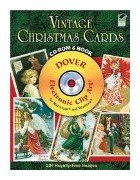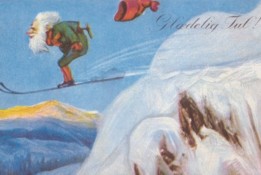|
Scandinavian Christmas HolidaysChristmas is the favorite of Scandinavians. After the long, cold, and increasingly gloomy fall, Christmas marks for them the turning point of the year – when light begins to triumph over darkness. Preparations begin the first Sunday in Advent, which officially opens the Christmas season. The first of four candles is lit on the Advent wreath – made either of painted metal or wood, or of pine twigs decorated with red or purple ribbons, and in many homes a red and yellow five pointed Advent star made of paper with an electric bulb inside is hung in the window. Passing that window will give you the perfect mood of the Scandinavian Christmas Holidays.

In Finland and Sweden an oblong holder of candlesticks with four or seven candles (or electric bulbs) is more popular. Families gather to make decorations for the Christmas tree – mobiles of straw, woven paper hearts and baskets – and to bake cookies for the holidays and drink juleglögg, a Swedish variant of hot spiced wine with raisins, almonds and a shot of snaps, which Americans know as aquavit. In the morning the children can hardly wait to open the first of twenty-four windows on the Advent calendar – also an old tradition introduced as late as the 1930s. Scandinavian Christmas Holidays In the weeks that follow, homes are decorated with garlands, tinsel and, in Denmark, Norway, and Sweden, with cardboard Christmas elves peeking from behind picture frames and mirrors. Greeting cards are written; and gifts bought, wrapped, and hidden from the children until Christmas Eve - the high point of the Scandinavian Christmas Holidays. Christmas Eve, December 24th, marks the highlight of the Scandinavian Christmas Holidays celebration. In Finland, at precisely noon, the “peace of Christmas” is proclaimed in the country’s former capital Turku, along with exhortations and greetings that date from the Middle Ages. Later in the day, thousands of candles are lit and shine over the snow on graves in cemeteries all across the country. In the other Scandinavian countries many families attend a church service, returning with appetites whetted for the dinner to follow. The table has been laid with a special Christmas cloth or centerpiece, with candles, and with other decorations.
In Sweden and Finland the excitement mounts as everyone awaits the arrival of Father Christmas himself, carrying a big sack with all the presents. In Denmark and Norway, the family forms a circle after dinner and walk (or dance) around the tree, singing Christmas Carols – now the gifts are unwrapped, and the children are told that these are from Father Christmas himself. In olden days in the countryside, the animals were given extra fodder and a bowl of porridge was placed outside for the nisse (in Sweden the tomte), the small, solitary guardian spirit of the farm or homestead, wearing gray and a long, pointed red cap. In recent times he has become an enduring symbol and token of the Scandinavian Christmas Holidays. Christmas day means visits by friends and relatives. In Finland, Norway and Sweden Christmas day is a quiet day of devotion, when the main activity is, or rather used to be, attending early Christmas Matins services. As exemplified in the stories of the book “Christmas in Scandinavia”, Christmas and New Year are celebrated as one big Yuletide festivity there. In earlier times, New Year’s Eve occasioned a quiet celebration, but in many homes today, especially among younger people, the holiday calls for a party with masks, streamers, and practical jokes. At midnight everyone drinks a toast to the New Year while the town hall or church bells ring and fireworks are set off. But Christmas is not quite over yet. It lasts a total of thirteen days and ends with Twelfth Night or Epiphany. Some keep their trees until then, others remove it to the yard and decorate it with strings of fat and nuts for the birds. The festival of Yule was celebrated long before Christianity came to Scandinavia. Yule in the Scandinavian languages is jul or jól, and Finnish has the loan word joulu. The etymology of this word is unclear. Perhaps it means “sacrifice” or perhaps it is related to the word “wheel,” that is, a “turning” of the sun, indicating that perhaps the old pagan celebration of the winter solstice is the origin of the Yule festival. The holiday perhaps originally marked the end of the agrarian work year. In the mid-eighteenth century, giving Christmas presents replaced the New Year’s gifts that had their origin in Roman tradition. In Catholic countries, these gifts used to be given to children by Saint Nicholas on his feast day, December 6. In protestant countries, this tradition was moved to Christmas Eve, reaching Scandinavia in the eighteenth century. The Christmas tree came to Scandinavia from Germany, where it’s first mention was in 1605. Not until the eighteenth century was the tree decorated with candles, and from Denmark it spread to the middle classes in the other Scandinavian countries around 1820, without gaining general popularity until the 1860s.
To a certain degree his origin is in misinterpretations of pictures of Saint Nicholas with his white beard, and he is frequently confused with Father Christmas. In fact, his history is lost in the pagan past. He has existed for several thousand years in folk beliefs, invisible or only rarely seen on the farm or in a family’s house, a male household spirit controlling domestic fortune, helpful when respected but grumpy and even dangerous when disregarded and therefore to be bribed at Christmas time with a bowl of hot rice pudding or porridge. Scandinavian Christmas Holidays as celebrated today is, of course, not identical with celebrations of past centuries. Descriptions from previous centuries are astonishingly sparse, and not until the introduction of the features with which we today associate Christmas – such as the tree, Father Christmas, and increased secularization and materialization of the festival – do stories emerge in literature in which the celebration of Christmas is either the center or the frame. Idealized, romanticized, and thereby trivialized descriptions of Christmas are generally without much value. On the other hand, texts that provide insight into more general human problems – be they of spiritual, social, or psychological nature – are of great value from a human as well as artistic point of view.
Scandinavian Christmas Holidays Home Page  Custom Search
|

 The popular Christmas elf emerged only in the nineteenth century.
The popular Christmas elf emerged only in the nineteenth century. 